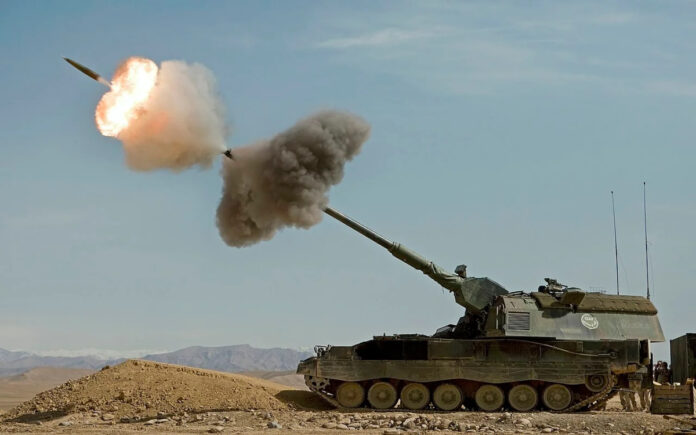Kyiv: Ukrainian soldiers have raised serious concerns regarding the durability of the German-made PzH 2000 self-propelled howitzers, citing significant wear and tear alongside a critical shortage of spare parts. These issues have prompted warnings about the long-term reliability of the equipment amid the ongoing conflict with Russia.
Less Reliable Than Alternatives
Reports suggest that a substantial number of PzH 2000 units, supplied by Germany, the Netherlands, and Italy, are currently out of service within the Ukrainian military. According to reports from WP, advanced component degradation has led to frequent breakdowns. Despite being considered a sophisticated artillery system, the PzH 2000 is reportedly less reliable compared to the Polish Krab artillery system, with particular issues arising from its loading mechanisms and frequent overheating of barrels.
Due to the intense nature of the conflict, Ukrainian forces often exceed the recommended firing limits, which prevents the howitzers’ barrels from cooling properly. While overheating is a common problem across various artillery systems, the PzH 2000 units have experienced more frequent failures compared to other NATO-supplied artillery systems.
Also Read | North Korea Reveals Uranium Enrichment Site During Kim Jong Un Visit
Ukrainian Officer’s Perspective
One Ukrainian artillery officer shared his experience with the system, emphasizing both its strengths and limitations:
“This is an excellent system, but its wear is evident. I’ve pointed out the need for barrel replacements after a certain period, but these replacements happen too slowly, partly due to the shortage of spare parts.”
Despite these setbacks, the Ukrainian military continues to recognize the critical role the PzH 2000 has played in strengthening their artillery capabilities. The system’s 155 mm cannon is capable of firing up to 10 rounds per minute, with a range of 30 to 80 kilometers, depending on the type of ammunition used.
Also Read | NSA Ajit Doval Meets Russian President Putin, Bilateral Meeting with PM Modi Proposed for Kazan Next Month
Plans for Further Support
In response to these challenges, efforts are underway to provide additional support to Ukraine’s military. In September, German Defense Minister Boris Pistorius announced new support packages for Ukraine, including the delivery of 77 Leopard 1A5 tanks and 12 more PzH 2000 howitzers. Of these, six are expected to be delivered by the end of the year.
These support measures aim to address the ongoing equipment shortages and ensure that Ukrainian forces remain capable of defending against Russian advances on the battlefield. However, with maintenance issues persisting, questions remain over the long-term effectiveness of these artillery systems under the high demands of the conflict.



